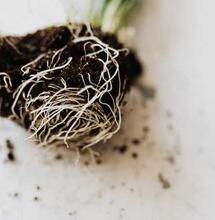What are "Landrace" Strains?

There is a significant dissimilarity between 1960s cannabis and today's cannabis. Until the late 1970s, you were more than likely smoking "sativa." These are tall plants with narrow leaves that produce wispy flowers. From its place of origin, India, this species travelled east, making its way down the east coast of Africa and over to the Americas.
Landrace strains belong to this family of original strains and often carry the name of the place where they originated. Over the years, the growing methods and settings particular to each zone bestowed distinctive characteristics to each strain's aesthetics and genetic makeup. Examples include Thai, Durban Poison and Acapulco Gold.
Whilst sativa landrace strains moved around the globe, indica landraces remained secluded in Afghanistan and Pakistan's parched, mountainous provinces. These plants are known for their wide leaves, short height, dense flowers, and the hash created from their buds. These strains also carry the names of where they were first discovered—Afghani, Hindu Kush, etc.
It was the late '70s when people consciously decided to breed these two kinds of plants together. This opened the door to breeders producing descendants that invariably carried the most desirable characteristics of each type. More importantly, it allowed them to avoid unwanted aspects that may weaken the plant's health and production. These are the hybrids that make up the modern cannabis market of today. We smoke hybrid cannabis instead of a pure landrace strain.
Are Landraces more Potent?
This depends on the strain, where and how it was grown. A true landrace will likely be less potent than today's strains, as they are primarily bred for higher potency.
Is it Hard to Find Landrace Strains?
Landrace strains hailing from the 1960s are not grown large scale anymore. However, there are a few classic legends with a big enough fanbase to keep a supply of them available in the current market. Heirlooms are cultivated in small batches. They carry the genetics of the landrace but not the original terroir. Terroir is the biological, environmental factors that would have influenced this strain in the initial natural setting where it first grew.
Here are a few heirloom strains that are still available.
Durban Poison
Hailing from Durban in South Africa, this is an energizing strain known for its distinctive smell, taste, and structure. Unlike generic narrow-leaf strains, this one delivers round, fluffy flowers, not long, wispy ones. It offers an aroma of anise, earthy spice, and sweetness.
Afghani
A wide-leafed strain. This plant produces dense buds and lots of resin, perfect for hash enthusiasts. Due to it originating in a dry climate, its buds tend to grow mould if exposed to high humidity. Its sweet and earthy smell equates to dank sedation.
Lamb's Bread
Allegedly Bob Marley's favourite. Lamb's Bread hails from Jamaica. This is an excellent strain for getting creative. It delivers an uplifting feeling and intense clarity. Like other landrace strains, it has a unique taste and smell. It's funky, grassy, and herbal, with a bit of kick of spice.
Acapulco Gold
This uplifting Mexican strain used to be the "standard" setter in cannabis production. This was due to the plant's stunning appearance and capability to produce a bunch of THC. It presents a remarkable aroma and a bit of cheese in the taste.
Thai
Thai is highly regarded for potency and its intense cerebral high. The dominant scent is a tropical fruit with a tinge of diesel. There is a subtle floral flavour on the exhale. Thai is a parent to numerous popular, uplifting and energizing strains loved today, including the original Haze.



.png)
